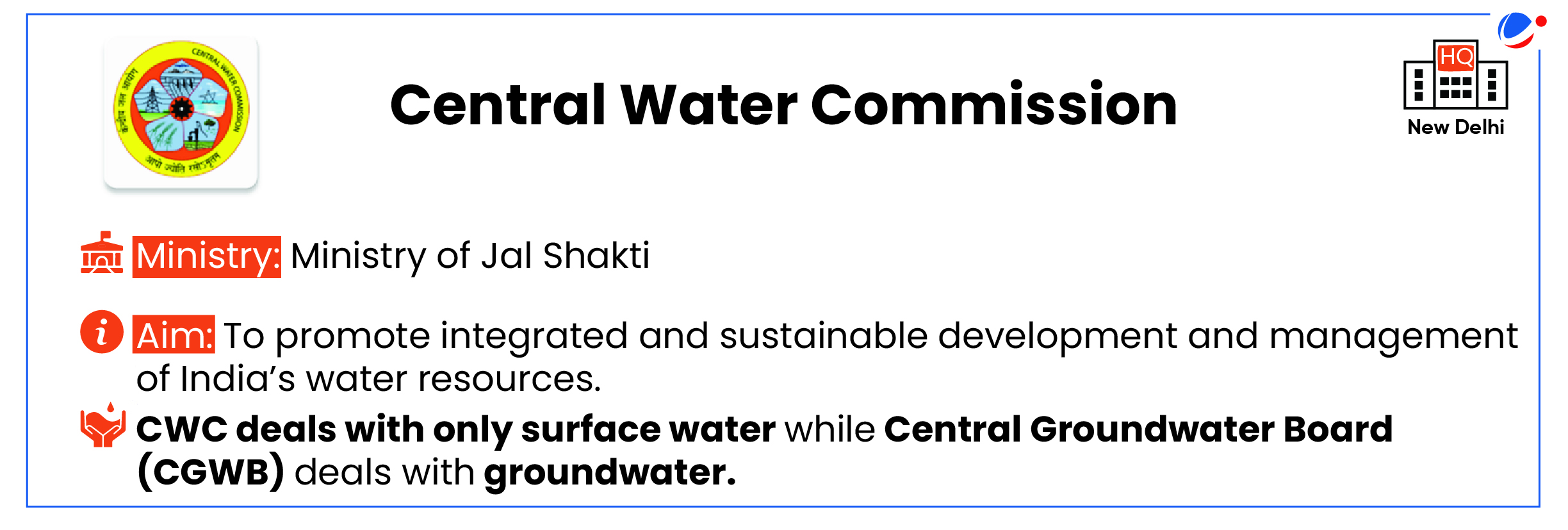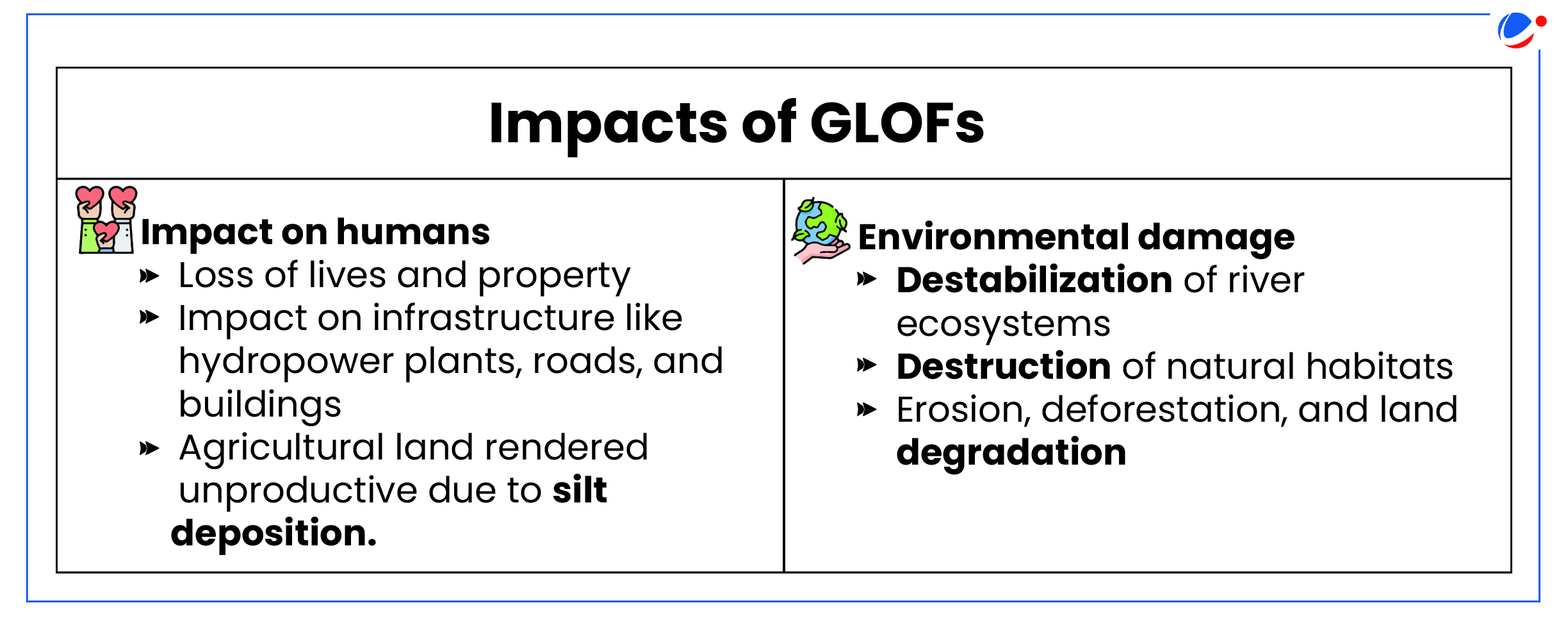Why in the News?
According to a recent report by Central Water Commission (CWC), glacial lakes and other water bodies in the Himalayas have expanded their surface area.
Key Findings of the report
- Increase in area of glacial lakes in India: Increase of 33.7%. (2011-2024)
- Transboundary risks: 10.81% increase in area from 2011 to 2024 of Glacial lakes and other water bodies in the Himalayan region, including neighbouring countries like Bhutan, Nepal and China, due to climate change.
- Lakes in High-risk category for GLOFs: 67 lakes identified in India experienced over a 40% increase in surface area.
- The regions with the most notable expansions include Ladakh, Himachal Pradesh, Uttarakhand, Sikkim, and Arunachal Pradesh.

About Glacial Lake and Glacial lake outburst flood (GLOFs)
- Glacial lakes: It is a body of water formed by the melting of glacial ice, typically created in depressions or basins carved out by glaciers during their movement.
- There are 4 categories of glacial lakes (based on their formation process) i.e. Moraine-dammed, Ice-dammed, Erosion, and others.
- GLOFs: It is a release of meltwater from a moraine or ice dam glacial due to dam failure.
- GLOFs have three main features
- Involve sudden (and sometimes cyclic) releases of water.
- Tend to be rapid events, lasting hours to days.
- Result in large downstream river discharges.
- Examples of GLOFs
- 2023: GLOF at South Lhonak, destroyed the Teesta III Dam at Chungthang in Sikkim.
- 2013: GLOF in Chorabari glacial lake and floods in Mandakini river in Uttarakhand.
Major Causes of GLOFs
- Glacial Surging: Sudden movement of ice over a relatively short period of time resulting in severe rapid glacier advance. E.g., Gilkey Glacier, Alaska.
- Moraine dam instability: Loose, unconsolidated moraines, which are inherently unstable, can collapse due to structural weakness. E,g., South Lhonak GLOFs, Sikkim
- Ice dam failure: Due to thermal stress, water pressure and internal melting weakening their structure.
- Seismic activity: Tectonic movements in mountainous regions can create sudden structural change.
- Human Activity: Activities such as unregulated urbanization, irrational mining, deforestation, hydropower projects, GHG emissions etc. can alter drainage patterns and stability of slope.

Initiatives taken in India for GLOFs management
Global initiatives for GLOFs management
|
Challenges in managing GLOFs
- Difficult and highly inaccessible Himalayan terrain makes it difficult to conduct regular surveys.
- Lack of early warning systems (EWS) which require robust planning and heavy infrastructure.
- Vulnerability of Himalayan region: Due to its presence in Seismic zone – IV & V, Himalayan region is prone to earthquakes and landslides.
- Climate change: Rising temperature is leading to shrinkage of glaciers.
- As per International Centre for Integrated Mountain Development (ICIMOD,) 70-80% of current glacier volume in Hindu Kush Himalaya (HKH) will disappear by 2100 under a high emission scenario.
Way Forward: NDMA guidelines
- Comprehensive understanding of GLOF dynamics: Delve into the causes, triggers, and processes of GLOFs, with a focus on the latest scientific research and case studies from the Himalayas and other mountain ranges such as the Alps, Tian Shan Range and the Andes.
- Enhance Technical Expertise and Build Capacity: Develop greater understanding to enhance technical expertise at the National and State level.
- Foster Collaboration and Strategy Development: Facilitate collaboration among experts, policymakers, and stakeholders to develop and implement comprehensive strategies for monitoring and mitigating GLOF risks.
- Exploring Mitigation Strategies: Examine structural and non-structural mitigation measures, including controlled breaching, siphoning, and the construction of outlet control structures, as well as community-based approaches.
- Advancing Monitoring and Early Warning Systems: Discuss the integration of satellite-based monitoring, Geographic Information Systems (GIS), and remote sensing technologies in predicting GLOFs.
- Explore the development and implementation of early warning systems tailored to the unique challenges of the Himalayan region.



